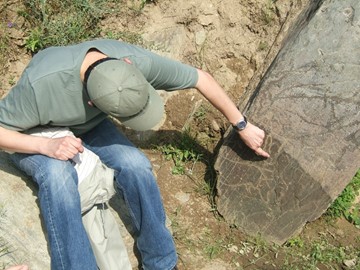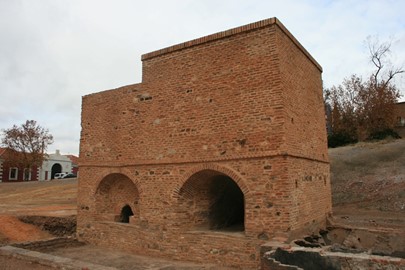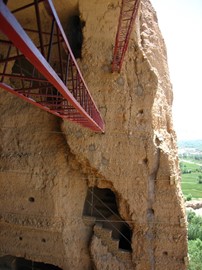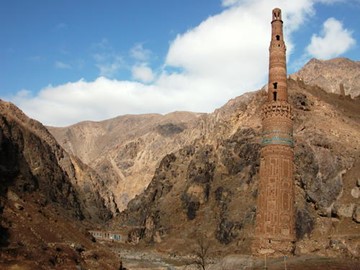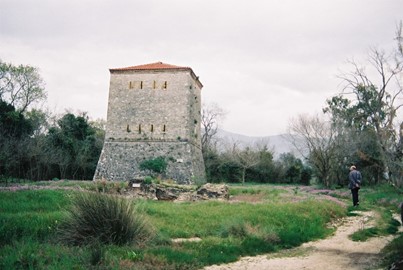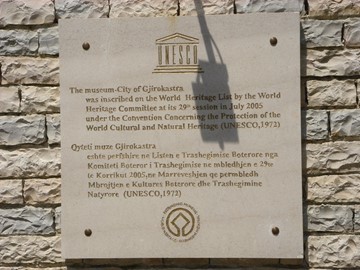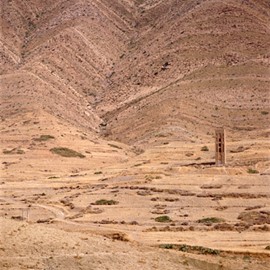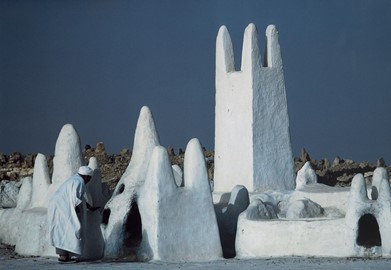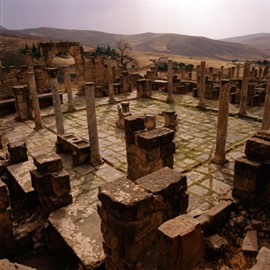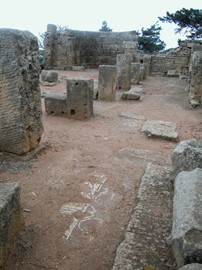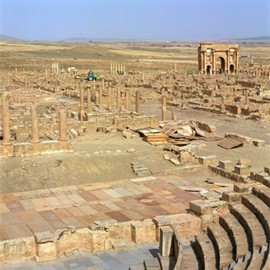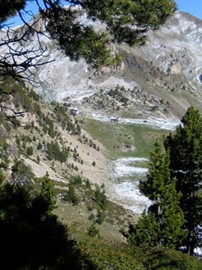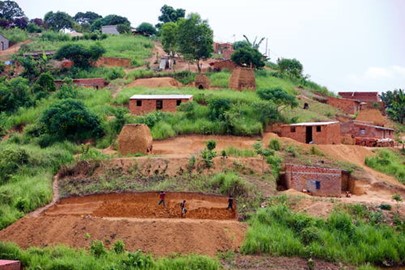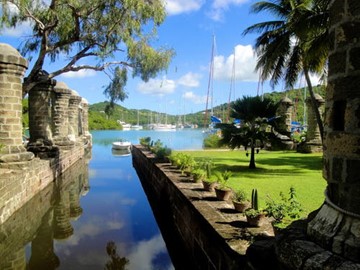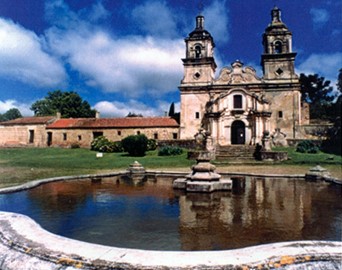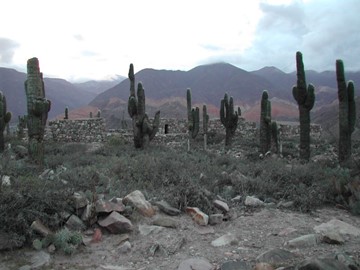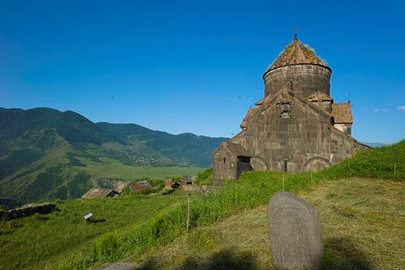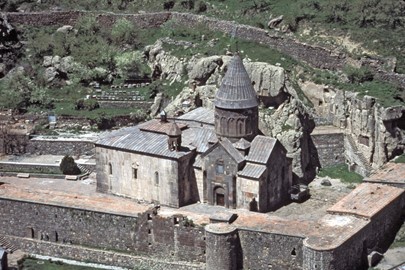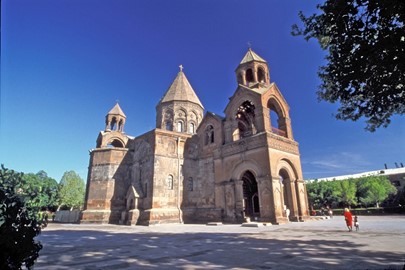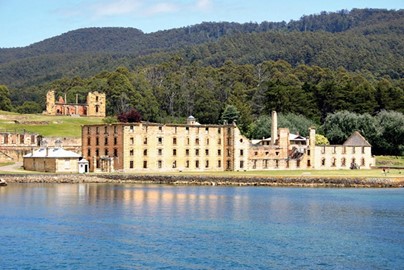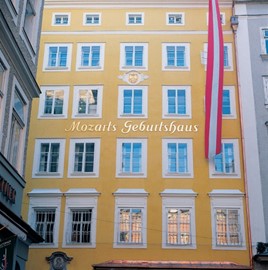category :: cultural
Côa Valley and Siega Verde
Côa Valley and Siega Verde, a UNESCO World Heritage site in Portugal and Spain, recognized in 1998 and extended in 2010, are open-air rock art sites featuring thousands of Paleolithic engravings from 22,000 to 10,000 BCE. Etched into schist along river valleys, these carvings of horses, aurochs, and hunters reflect humanity’s earliest artistic expressions. This transnational site showcases Iberia’s prehistoric heritage, preserving a rare outdoor gallery of ancient life across borders.
Heritage of Mercury
Heritage of Mercury, a UNESCO World Heritage site in Slovenia and Spain, recognized in 2012, encompasses the historic mercury mines of Idrija and Almadén, the world’s largest, operational from antiquity to recent times. Featuring mines, smelting plants, and towns, it reflects centuries of mercury extraction that fueled intercontinental trade, notably aiding silver mining in the Americas. This transnational site showcases a unique socio-technical legacy, blending industrial innovation with cultural heritage ... Read More
Bamiyan Valley
Bamiyan Valley, a UNESCO World Heritage site in Afghanistan, recognized in 2003 and listed as World Heritage in Danger, is an ancient cultural landscape famed for its colossal Buddha statues, carved into cliffs between the 4th and 6th centuries CE, though destroyed in 2001. Nestled in a high valley, its caves, monasteries, and Silk Road relics reflect a blend of Greco-Buddhist art and medieval Islamic heritage. This site showcases Afghanistan’s rich historical tapestry, preserving a poignant legacy amid ong... Read More
Minaret of Jam
The Minaret of Jam, a UNESCO World Heritage site in Afghanistan, recognized in 2002 and listed as World Heritage in Danger, is a 12th-century brick tower standing 65 meters tall, built by the Ghurid Dynasty in a remote river valley. Adorned with intricate stucco and tile work, it reflects Islamic architectural brilliance and marks a once-thriving medieval city now lost to time. This isolated monument showcases Afghanistan’s cultural heritage, enduring despite erosion and conflict threats.
Butrint
Butrint, a UNESCO World Heritage site in Albania, recognized in 1992 with expansions in 1999 and 2007, is an ancient city tracing 2,500 years of history from Greek colonization to Ottoman rule. Nestled in a lush lagoon, its ruins—featuring a theater, basilica, and Venetian fortress—reflect a blend of Mediterranean cultures amid a biodiverse wetland. This well-preserved site showcases Albania’s archaeological richness, offering a layered testament to its enduring historical significance.
Berat and Gjirokastra
Berat and Gjirokastra, a UNESCO World Heritage site in Albania, recognized in 2005 and extended in 2008, are two historic Ottoman towns showcasing rare Balkan architecture from the 13th to 19th centuries. Berat, the 'City of a Thousand Windows,' features whitewashed houses and a hilltop castle, while Gjirokastra’s stone-roofed homes and bazaar reflect medieval urban life. This dual site highlights Albania’s cultural heritage, preserving a unique blend of Ottoman and local traditions in picturesque settings.... Read More
Al Qal'a of Beni Hammad
Al Qal’a of Beni Hammad, a UNESCO World Heritage site in Algeria, recognized in 1980, is an 11th-century fortified city in a mountainous region, once the capital of the Hammadid dynasty. Its ruins—featuring a grand mosque, palace, and defensive walls—reflect early Islamic urban planning and architecture in North Africa. This well-preserved site showcases Algeria’s medieval heritage, offering a glimpse into a vanished Berber dynasty’s cultural and political legacy.
M'Zab Valley
M’Zab Valley, a UNESCO World Heritage site in Algeria, recognized in 1982, is a 10th-century oasis settlement in the Sahara, founded by the Ibadi Muslim sect. Its five fortified towns, or ksour, feature palm grove irrigation, mudbrick architecture, and a minimalist mosque design, reflecting a unique communal lifestyle. This well-preserved site showcases Algeria’s cultural heritage, blending human ingenuity with a harsh desert environment in a timeless urban landscape.
Djémila
Djémila, a UNESCO World Heritage site in Algeria, recognized in 1982, is a Roman city founded in the 1st century CE, nestled in a hilly landscape. Known as Cuicul, its well-preserved ruins—featuring a forum, temples, basilicas, and a theater—reflect sophisticated urban planning adapted to rugged terrain. This site showcases Algeria’s ancient heritage, offering a striking testament to Roman architecture and life in North Africa.
Tipasa
Tipasa, a UNESCO World Heritage site in Algeria, recognized in 1982 and listed as World Heritage in Danger from 2002-2006, is an ancient coastal city with Punic, Roman, and early Christian ruins from the 6th century BCE to the 6th century CE. Its scenic remains—featuring a theater, basilicas, and mausoleums—blend Mediterranean beauty with historical layers along the sea. This site showcases Algeria’s rich archaeological heritage, preserving a crossroads of civilizations despite past threats.
Timgad
Timgad, a UNESCO World Heritage site in Algeria, recognized in 1982, is a Roman colonial city founded in 100 CE by Emperor Trajan, laid out in a perfect grid in the Aurès Mountains. Its well-preserved ruins—featuring a triumphal arch, theater, and baths—reflect a model of Roman urban planning in North Africa. This site showcases Algeria’s ancient heritage, offering a vivid snapshot of imperial Rome’s reach and architectural prowess.
Kasbah of Algiers
The Kasbah of Algiers, a UNESCO World Heritage site in Algeria, recognized in 1992, is a historic citadel in Algiers, built from the 10th century under Berber dynasties and reshaped by Ottoman rule. Its labyrinth of narrow streets, whitewashed houses, mosques, and palaces reflects a unique blend of Islamic and Mediterranean architecture. This site showcases Algeria’s cultural heritage, preserving a vibrant urban tapestry of medieval and colonial influences overlooking the sea.
Madriu Perafita Claror Valley
Madriu-Perafita-Claror Valley, a UNESCO World Heritage site in Andorra, recognized in 2004, is a pristine Pyrenean valley preserving a medieval cultural landscape of pastoral life. Featuring stone huts, terraced fields, and trails amid rugged peaks and glacial lakes, it reflects centuries of sustainable agro-pastoral traditions. This isolated site showcases Andorra’s historical heritage, offering a rare glimpse into a pre-industrial alpine way of life untouched by modern development.
Mbanza Kongo
Mbanza Kongo, a UNESCO World Heritage site in Angola, recognized in 2017, is the historic capital of the Kongo Kingdom, thriving from the 14th century until its decline in the 19th century. Its ruins—featuring royal graves, churches, and a sacred tree—reflect a blend of African traditions and Portuguese colonial influences after 1483. This site showcases Angola’s precolonial heritage, preserving the spiritual and political legacy of one of Central Africa’s most powerful kingdoms.
Antigua Naval Dockyard
Antigua Naval Dockyard, a UNESCO World Heritage site in Antigua and Barbuda, recognized in 2016, is an 18th-century British naval base built in a sheltered harbor, operational from 1725 to 1855. Featuring Georgian-style buildings, docks, and fortifications constructed partly by enslaved Africans, it supported Britain’s Caribbean fleet during colonial wars. This well-preserved site showcases Antigua’s maritime heritage, reflecting a pivotal era of naval power and colonial history in the West Indies.
Cueva de las Manos
Cueva de las Manos, a UNESCO World Heritage site in Argentina, recognized in 1999, is a prehistoric rock art site in Patagonia featuring cave paintings from 13,000 to 9,500 years ago. Its vivid hand stencils, hunting scenes, and animal depictions, etched in vibrant colors along a canyon wall, reflect the artistry of early hunter-gatherers. This site showcases Argentina’s ancient heritage, preserving a stunning record of human creativity in a remote landscape.
Jesuit Block and Estancias of Córdoba
Jesuit Block and Estancias of Córdoba, a UNESCO World Heritage site in Argentina, recognized in 2000, is a 17th- and 18th-century complex in Córdoba featuring a Jesuit college, church, and five rural estates. Built to fund missionary work, its baroque architecture and productive lands reflect a unique blend of European and Indigenous influences. This site showcases Argentina’s colonial heritage, preserving a testament to Jesuit education and economic ingenuity in the Americas.
Quebrada de Humahuaca
Quebrada de Humahuaca, a UNESCO World Heritage site in Argentina, recognized in 2003, is a dramatic Andean valley tracing 10,000 years of human history along an ancient Inca trade route. Featuring colorful rock formations, pre-Columbian villages, and colonial towns like Humahuaca, it reflects a vibrant cultural mosaic of Indigenous and Spanish influences. This site showcases Argentina’s rich heritage, blending natural splendor with a deep historical narrative.
Haghpat and Sanahin Monasteries
Haghpat and Sanahin Monasteries, a UNESCO World Heritage site in Armenia, recognized in 1996 and extended in 2000, are 10th- to 13th-century monastic complexes showcasing medieval Armenian architecture. Featuring domed churches, libraries, and intricate stone crosses (khachkars), they reflect a golden age of religious and scholarly life. This site highlights Armenia’s cultural heritage, preserving a testament to its spiritual and artistic legacy in a rugged landscape.
Geghard Monastery
Geghard Monastery, a UNESCO World Heritage site in Armenia, recognized in 2000, is a 4th- to 13th-century complex partially carved into cliffs, blending rock-hewn churches with ornate stonework. Renowned for its acoustics and sacred relics, like the spear said to have pierced Christ, it reflects medieval Armenian spirituality and craftsmanship. This site showcases Armenia’s cultural heritage, preserving a unique fusion of nature and architecture in a dramatic setting.
Echmiatsin and Zvartnots
Echmiatsin and Zvartnots, a UNESCO World Heritage site in Armenia, recognized in 2000, encompass the 4th-century Mother Cathedral of Echmiatsin, the world’s oldest cathedral, and the 7th-century Zvartnots ruins, a pioneering circular temple. Reflecting Armenia’s early adoption of Christianity, these sites feature intricate stonework and architectural innovation. This site showcases Armenia’s religious and cultural heritage, preserving a foundational legacy of Christian history and design.
Sydney Opera House
The Sydney Opera House, a UNESCO World Heritage site in Australia, is an architectural masterpiece celebrated for its distinctive sail-like design and cultural prominence. Perched on a waterfront, its white-tiled roof gleams against the skyline, symbolizing innovation in modern engineering. Designed by Jørn Utzon and completed in 1973, it serves as a global hub for performing arts, hosting world-class events. This iconic structure embodies artistic excellence and human creativity, making it a timeless emble... Read More
Australian Convict Sites
The Australian Convict Sites, a UNESCO World Heritage site in Australia, encompass historic locations that reveal the nation’s colonial past and the global story of forced migration. These sites, including prisons, barracks, and workyards, were built and inhabited by convicts transported from Britain between 1788 and 1868. Featuring Georgian architecture and stark landscapes, they illustrate the harsh realities of penal life and early settlement. This collection stands as a powerful testament to human endur... Read More
Royal Exhibition Building
The Royal Exhibition Building and Carlton Gardens, a UNESCO World Heritage site in Australia, is a grand architectural complex celebrated for its historical and cultural significance. Completed in 1880, the ornate Victorian-era building, with its soaring dome, hosted major international exhibitions, showcasing industrial progress. Surrounded by meticulously designed gardens featuring fountains and tree-lined paths, it reflects 19th-century urban planning ideals. This iconic site stands as a symbol of human ... Read More
Salzburg
Salzburg, a UNESCO World Heritage site in Austria, is a historic city celebrated for its baroque architecture and rich musical heritage. Nestled against a backdrop of alpine peaks, its charming old town features ornate churches, grand palaces, and cobblestone streets. Birthplace of Mozart and the setting for 'The Sound of Music,' it blends cultural legacy with scenic beauty. This well-preserved urban gem reflects centuries of artistic and architectural achievement, making it a timeless European treasure.
